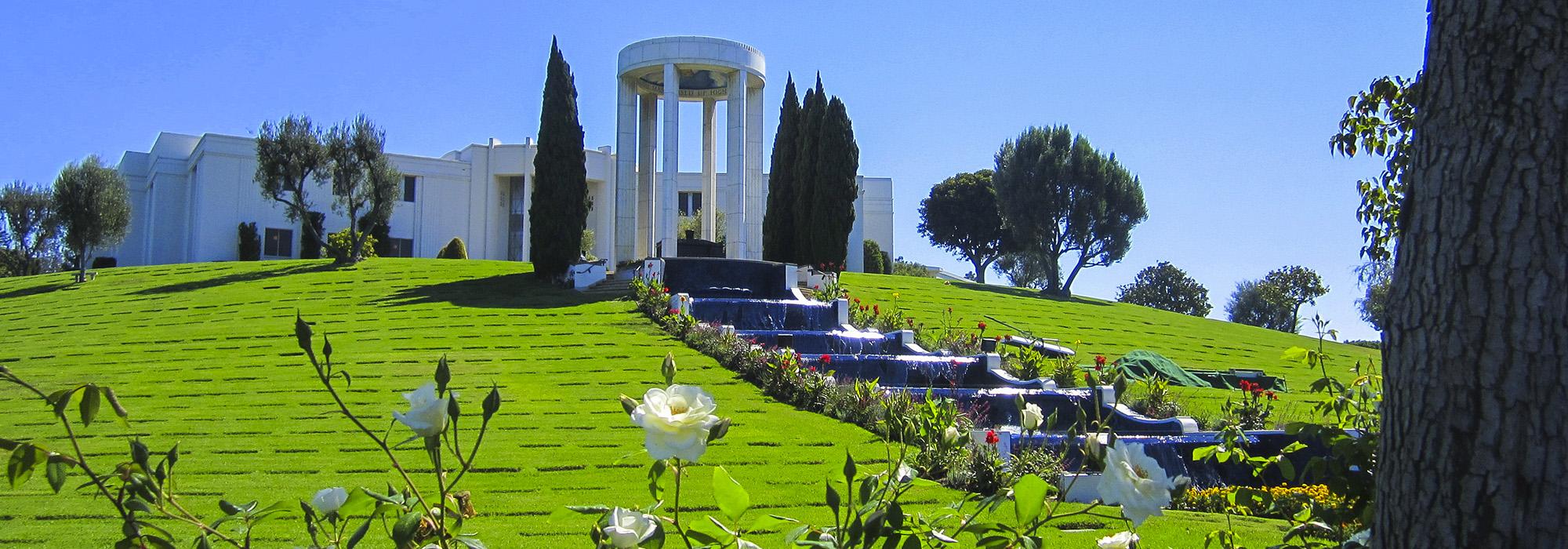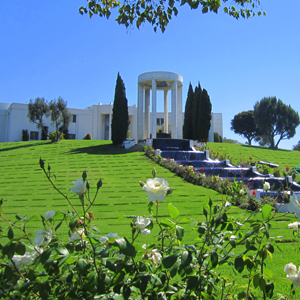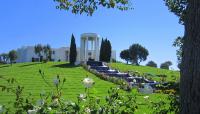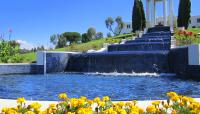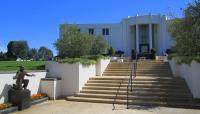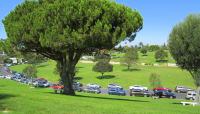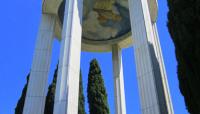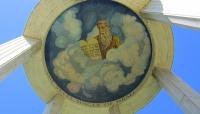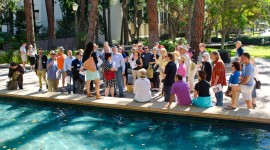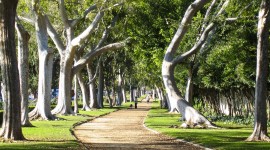Landscape Information
Planned in 1941 by Harry and Robert Groman as the final resting place of Southern California’s Jewish community leaders, this 45-acre wedge-shaped site in Culver City was designed in 1945 by Ralph Cornell in collaboration with architect Arthur Froehlich. Taking advantage of the naturally hilly location, Cornell gracefully located vehicular circulation on roads that meandered around the site. Though not built when the Park opened in 1946, the design team proposed a mausoleum at the crest of the hill, from which a 120-foot waterfall would cascade dramatically down the hillside, terminating in a reflecting pool.
Cornell’s planting plan featured two pairs of specimen Port Jackson figs at the Centinela Avenue entrance to the Park. Four more surrounded the hexagonal parking area, one pair framing the view towards the crest of the hill and the proposed mausoleum and cascade. The site was enclosed by clusters of Canary Island pines, with picturesque groupings of Italian stone pine planted along the roadways. Olive, magnolia, and elm completed the basic framework, punctuated with a wide array of flowering trees and shrubs for seasonal color.
In 1951, architect Paul Williams designed a restrained two-story Neoclassical Modern mausoleum using the same basic footprint proposed in Cornell’s plan. Williams also designed an adjacent monument for entertainer Al Jolson that includes a 75-foot- tall pillared mosaic-adorned dome, from which a modified version of Cornell’s tiled waterfall cascade and flower-lined reflecting pool were finally built. Later monuments include artist Albert Wein’s Garden of Memories bronze series of sculptures (1968), and Mary Ann DeVine’s bronze bas-relief sculptures Pivotal Moments in the History of the Jewish People, Canaan (1992).



